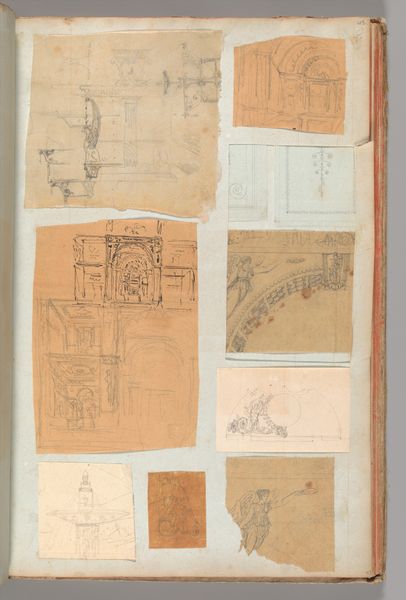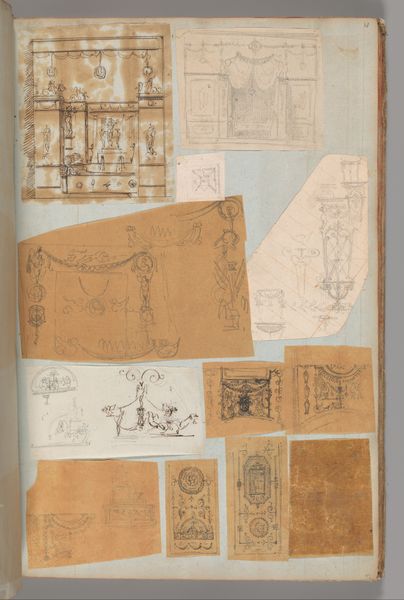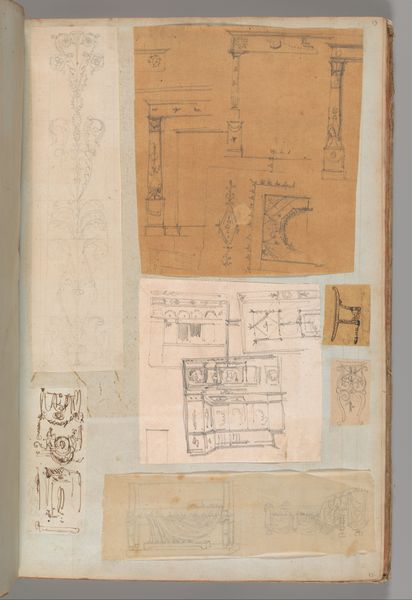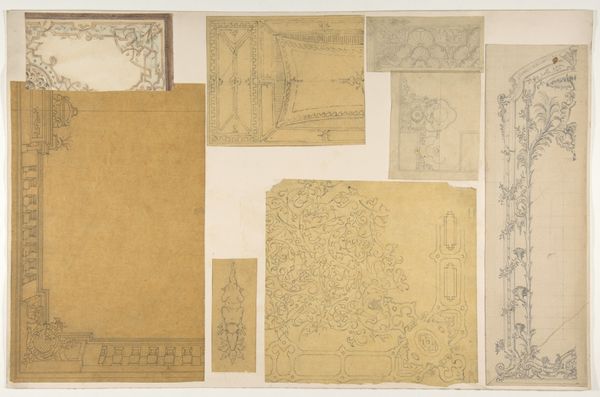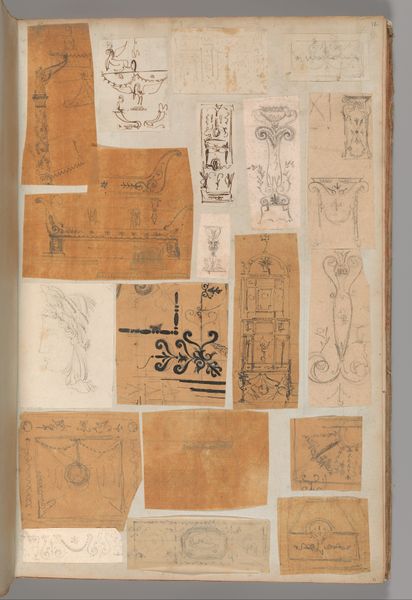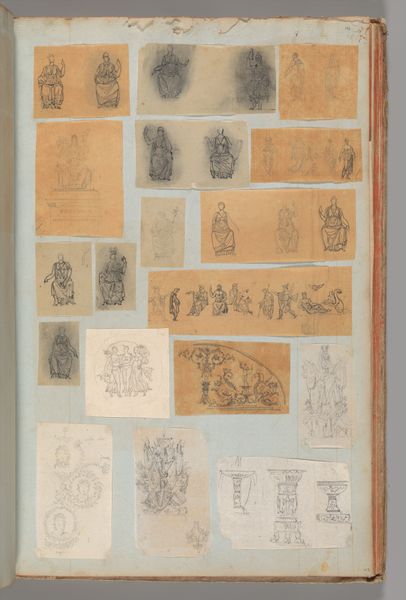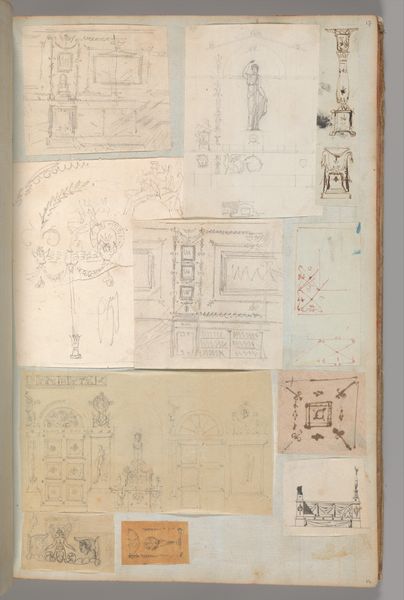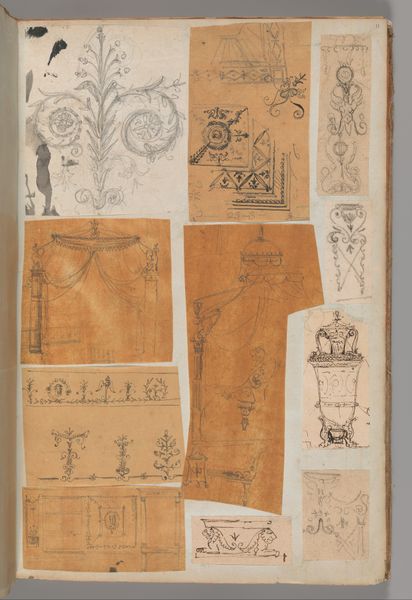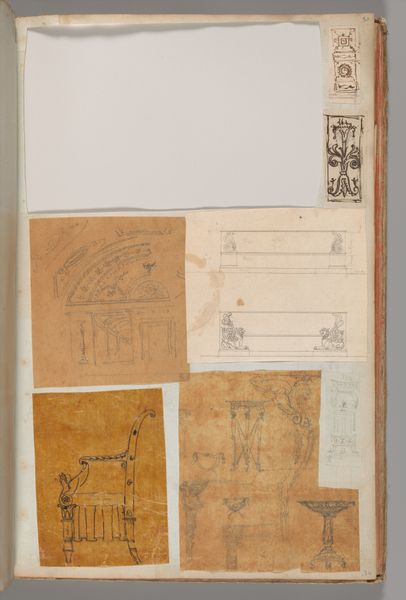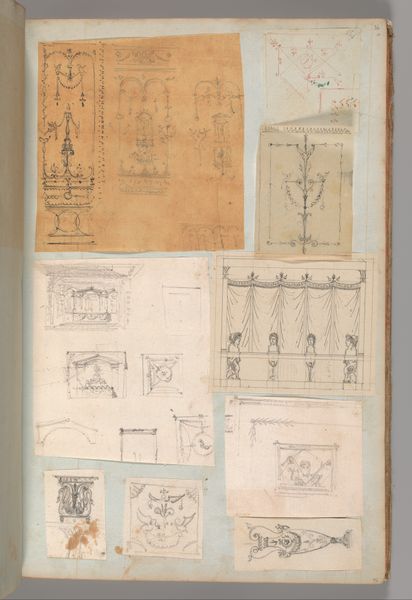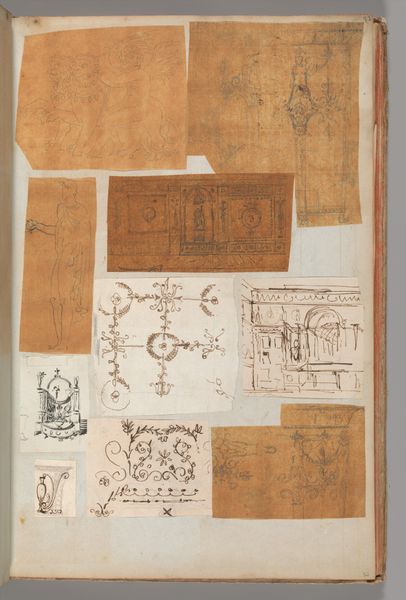
Page from a Scrapbook containing Drawings and Several Prints of Architecture, Interiors, Furniture and Other Objects 1795 - 1805
0:00
0:00
drawing, print, architecture
#
drawing
#
neoclacissism
# print
#
geometric
#
line
#
academic-art
#
architecture
Dimensions: 15 11/16 x 10 in. (39.8 x 25.4 cm)
Copyright: Public Domain
Editor: This is a page from a scrapbook by Charles Percier, dating from around 1795 to 1805, held at the Met. It features drawings and prints related to architecture and interiors. There’s a real sense of precision here, almost like an architect’s notebook. What symbols or historical elements stand out to you in this collection of images? Curator: These aren't merely architectural sketches; they're encoded aspirations. Percier, steeped in neoclassicism, isn't just depicting structures; he’s summoning a vision of order, reason, and civic virtue—hallmarks of the era. Observe the geometric precision and recurring motifs. What emotions do these repeated architectural elements evoke in you? Editor: I see symmetry and balance… maybe a longing for an ideal world? But I’m also curious about why these were collected together in a scrapbook. Curator: Exactly! The scrapbook format itself suggests a personal quest for the ideal form, carefully piecing together fragments of inspiration. Think of it as a personal symbolic language being developed. The arches, columns, and ornamentation - where do you think they pull from? Do you recognize echoes of ancient Greece and Rome? Editor: I do see the classical influence. It makes sense, given the period. The images speak of grand designs, even on this intimate scale. Curator: The scale *is* key! Consider the emotional impact: intimacy paired with grandiose aspirations. The scrapbook then becomes a space to imagine and dream; to collect a future by remembering a past. We are not only encountering a scrapbook of images, but also a scrapbook of memory and desire. Editor: It’s fascinating to think about the layers of meaning within something that, at first glance, seems like simple sketches. This scrapbook gives insights into more than architecture itself. Curator: Indeed. It holds the dreams of an era, revealed to us through persistent visual memory.
Comments
No comments
Be the first to comment and join the conversation on the ultimate creative platform.

